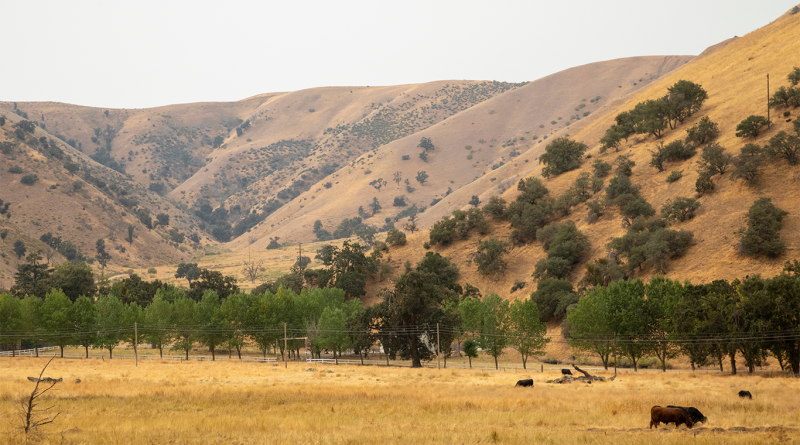California’s Solar-Plus-Storage Surge: A Blueprint for Clean Energy
The Growing Momentum for Solar-Plus-Storage in California
California is a leader in the clean energy revolution, aggressively expanding its solar-plus-storage projects. Intending to reach 100% clean energy by 2045, the state is heavily investing in energy storage solutions to capture excess electricity generated by solar panels and release it during peak demand periods.
The state’s energy storage capacity has grown significantly, with over 6,600 megawatts (MW) currently online, up from 770 MW four years ago. This is projected to reach 8,500 MW by the end of the year.
Solar-plus-storage projects, combining photovoltaic (PV) solar panels with battery storage systems, play a crucial role in maintaining a steady supply of renewable power and enhancing grid resilience.
Discover California’s dynamic landscape in solar-plus-storage, the innovations driving the energy storage market, and the challenges and opportunities in scaling up these essential projects.
California’s Current Landscape in Solar and Energy Storage
California’s commitment to renewable energy is evident in its rapid deployment of solar-plus-storage projects. As of late 2023, the state has more than 6,600 MW of battery storage capacity online, with another 1,900 MW expected to be operational by year-end. This impressive growth reflects California’s policies forstate-wide a sustainable energy grid.
One of the most notable projects is the Edwards & Sanborn project in Kern County, featuring 875 MW of solar PV capacity paired with 3,287 megawatt-hours (MWh) of battery storage. This project exemplifies California’s leveraging of large-scale installations to achieve its clean energy goals. By capturing solar power during the day and storing it for use during peak demand periods, these projects are vital for grid stability.
The state’s focus on expanding energy storage is driven by the need to meet peak electricity demand, particularly in the late afternoon and evening when solar generation decreases. Battery storage systems help bridge this gap by storing excess energy and releasing it when needed most. To meet its clean energy targets, California projects it will need 52,000 MW of energy storage capacity by 2045.
The California Energy Commission (CEC) reports over 122,000 battery storage systems installed state-wide, covering homes, businesses, and public facilities. This decentralized approach enhances grid resilience, providing backup power during outages and reducing reliance on peaker plants.
The Role of Solar-Plus-Storage Projects in Grid Modernization
Solar-plus-storage projects are essential for modernizing California’s grid. By storing excess solar energy during the day and discharging it when demand peaks, these projects help stabilize the grid and minimize the use of fossil fuel-based power plants.
Recent legislation in California has streamlined the permitting process for energy storage facilities, reducing the environmental review timeline to 270 days, which accelerates clean energy project development. The Moss Landing Energy Storage Facility, the world’s largest battery storage system, demonstrates the potential of solar-plus-storage to provide essential grid services like frequency regulation, voltage support, and emergency backup. Solar-plus-storage projects also reduce greenhouse gas emissions by supplying renewable energy during peak demand, minimizing reliance on fossil fuels. This supports California’s goal of an equitable, affordable, and reliable energy grid.
Key Trends and Innovations in California’s Energy Storage Market
Several key trends are driving the growth of California’s energy storage market. One major trend is the increased adoption of large-scale battery storage projects that combine multiple technologies to enhance efficiency. For instance, the Edwards & Sanborn project integrates extensive solar PV capacity with advanced battery storage.
Advances in battery technology, including improvements in lithium-ion batteries, solid-state batteries, and flow batteries, are extending battery life, improving energy density, and reducing costs. Innovations in AI and machine learning are optimizing the dispatch of stored energy to match grid demands dynamically.
Public-private partnerships are also accelerating growth. State incentives and private investments are fostering a competitive market, encouraging innovation in energy storage technology and deployment.
Challenges and Opportunities in Scaling Energy Storage
Scaling up energy storage in California presents both challenges and opportunities. Supply chain constraints for lithium-ion batteries are a significant issue, with rising global demand driving up costs. Regulatory hurdles and the complexity of integrating new technologies into the existing grid infrastructure also pose challenges.
However, opportunities abound. Advances in battery technology and recycling, coupled with new policies that support innovation and investment, are helping to overcome these obstacles. Public-private partnerships and increased participation from community choice aggregators (CCAs) and local governments are driving further growth in the energy storage market.
California’s Path to a Clean Energy Future
California is setting the pace for solar-plus-storage projects, with more than 6,600 MW of energy storage already online. The state’s approach to integrating solar and storage serves as a blueprint for other regions aiming to achieve similar clean energy goals. Through continued investment and innovation, California is on track to achieve its target of 100% clean energy by 2045, leading the way to a sustainable energy future.
Sources:
